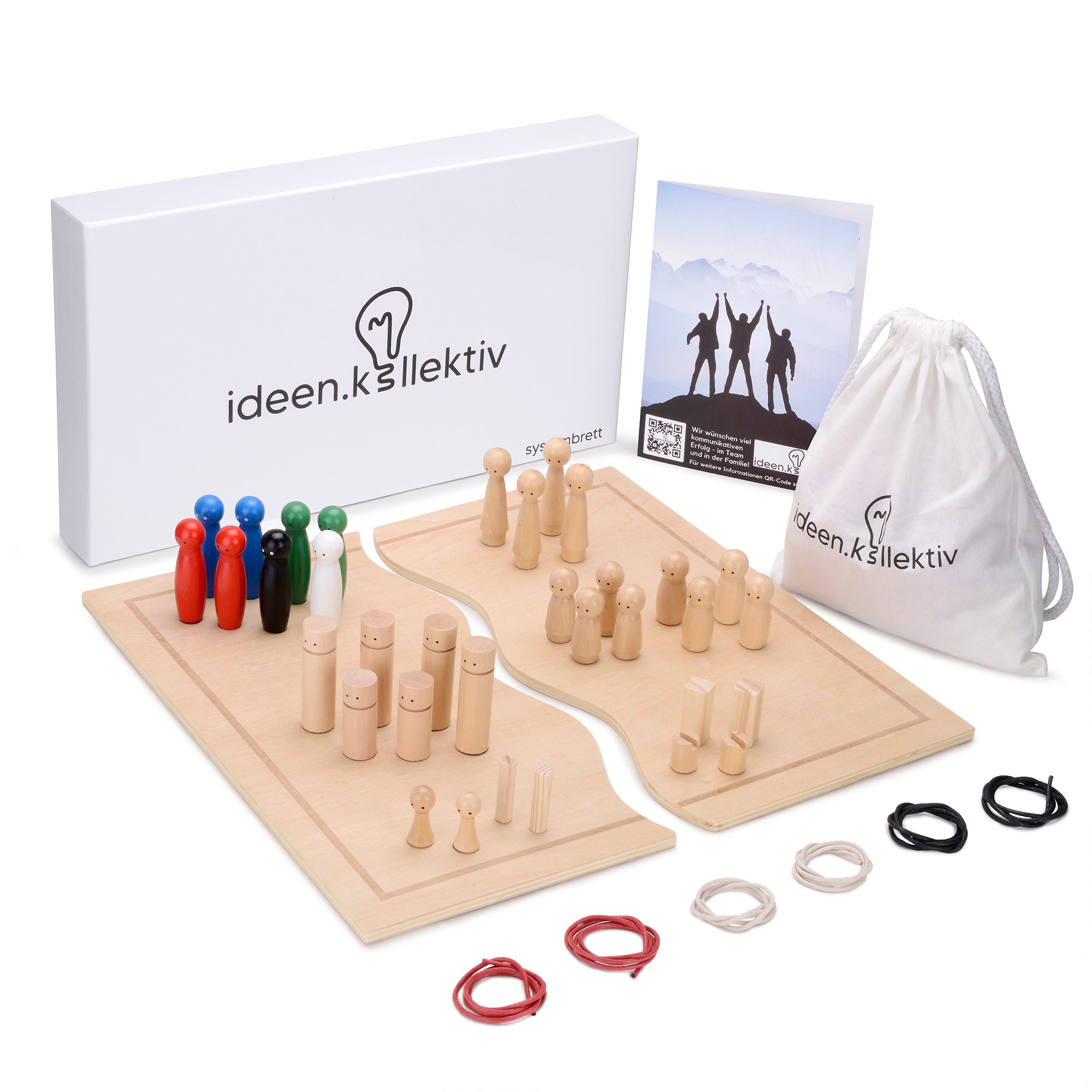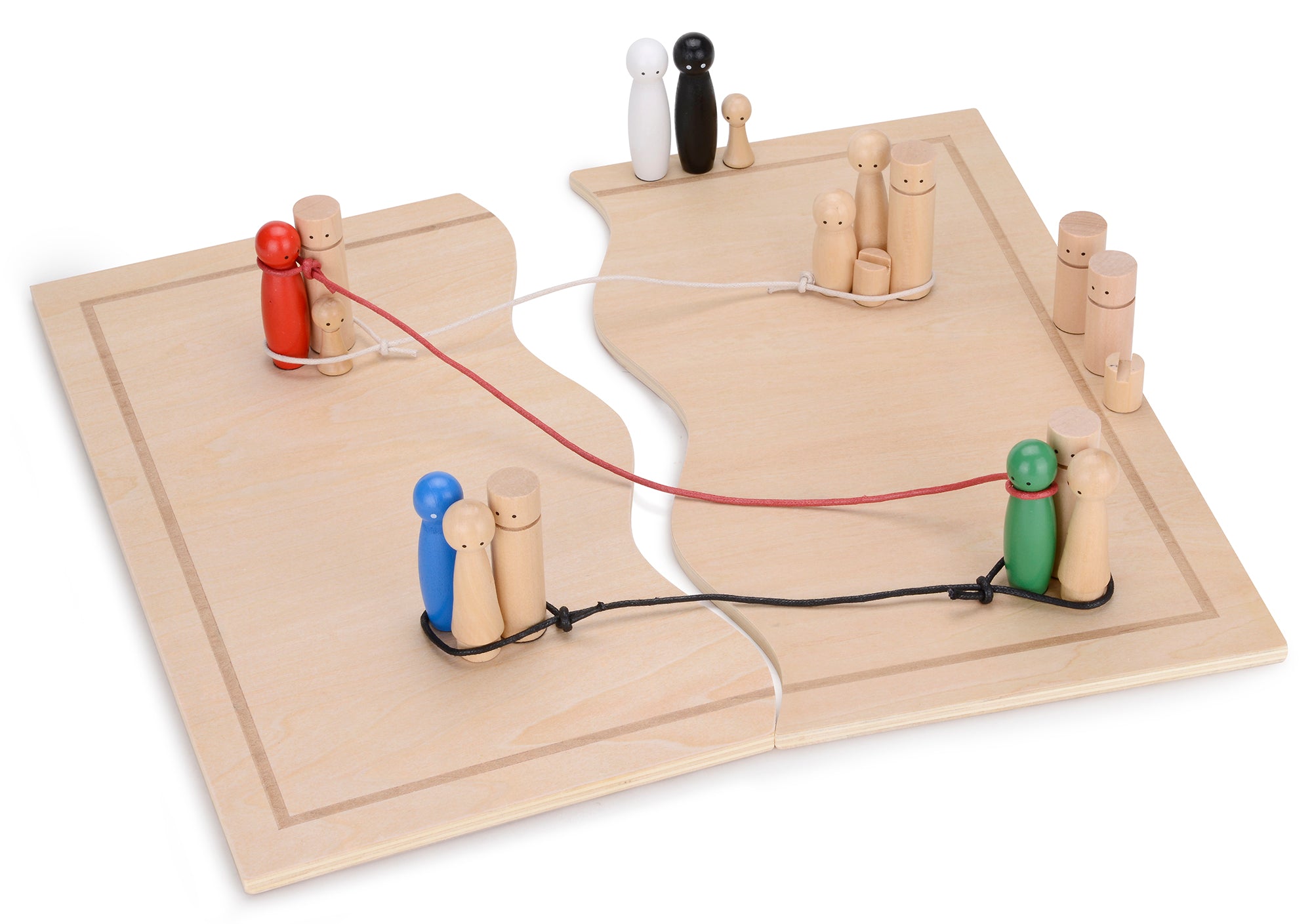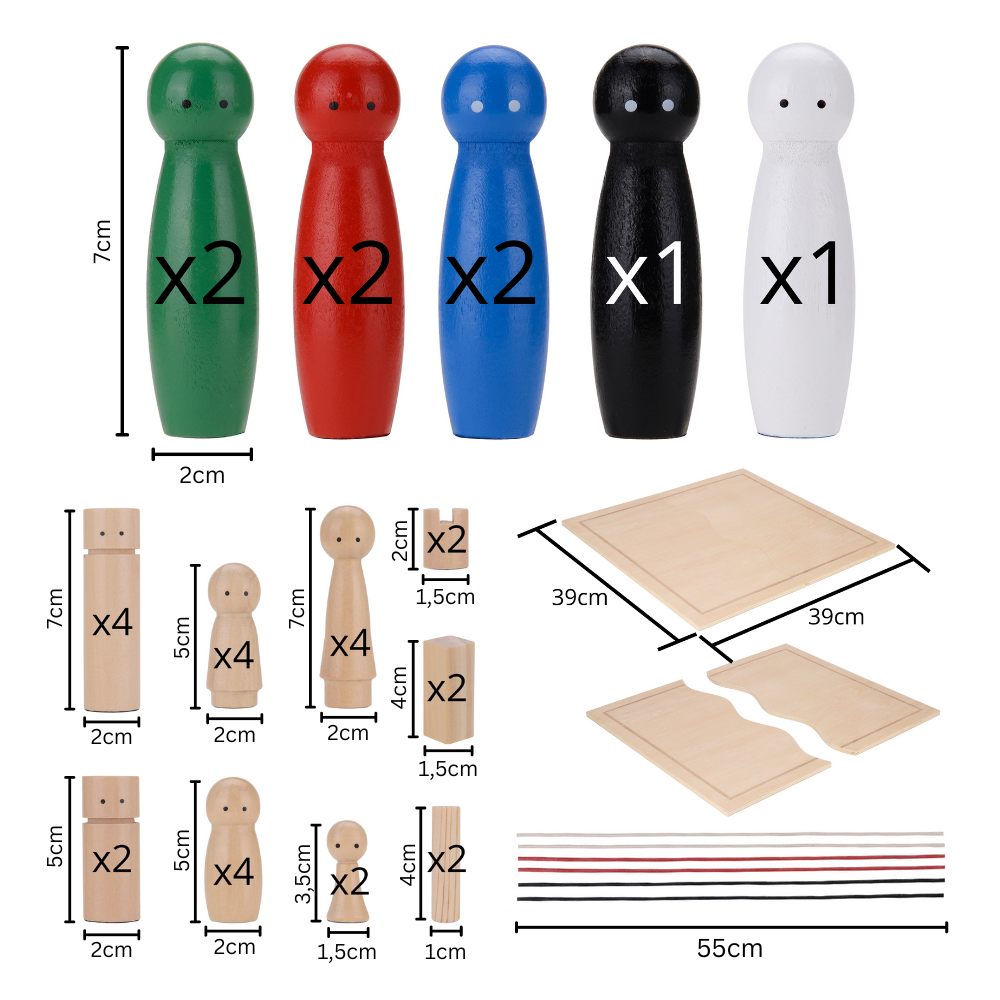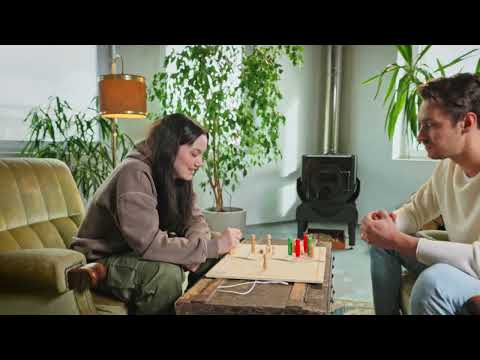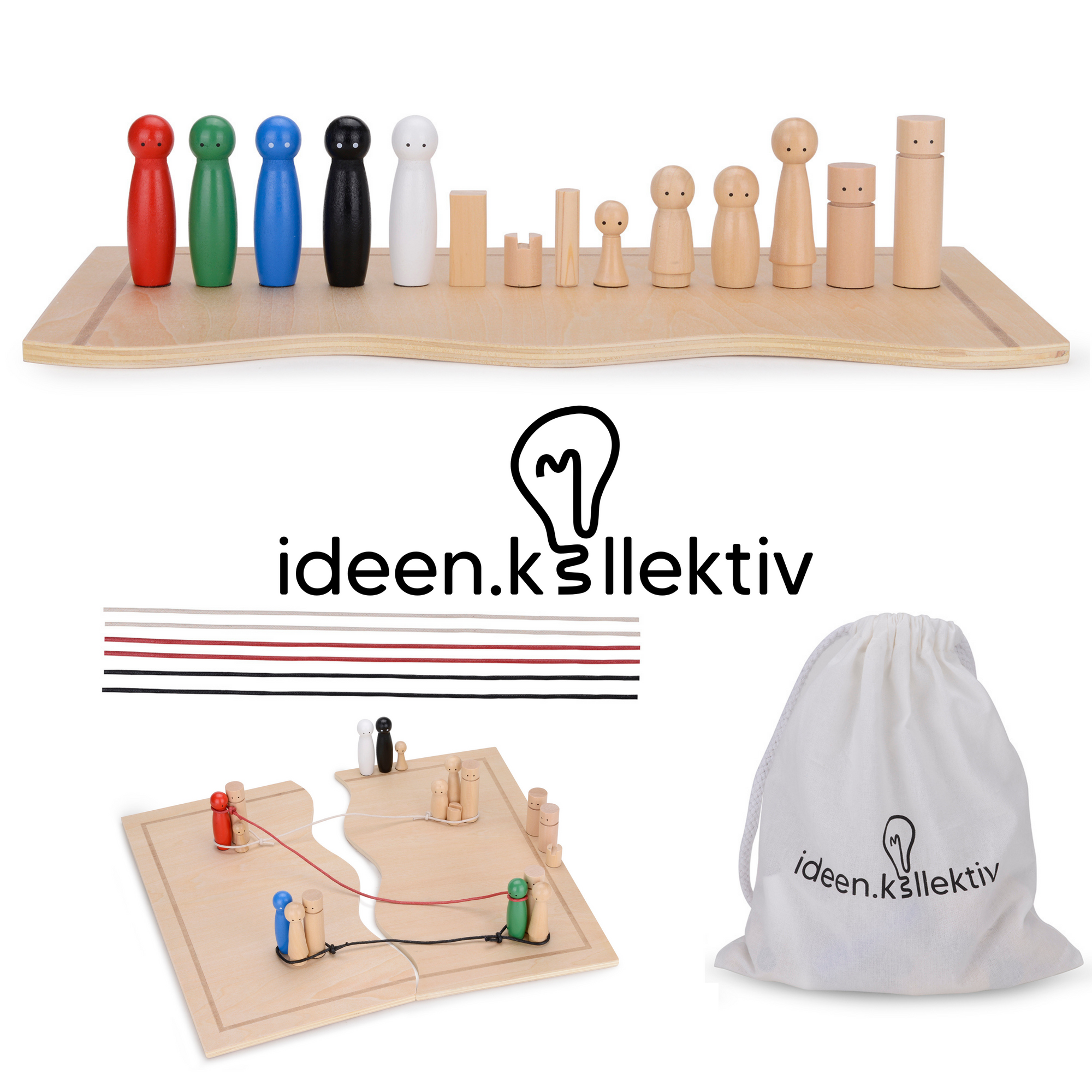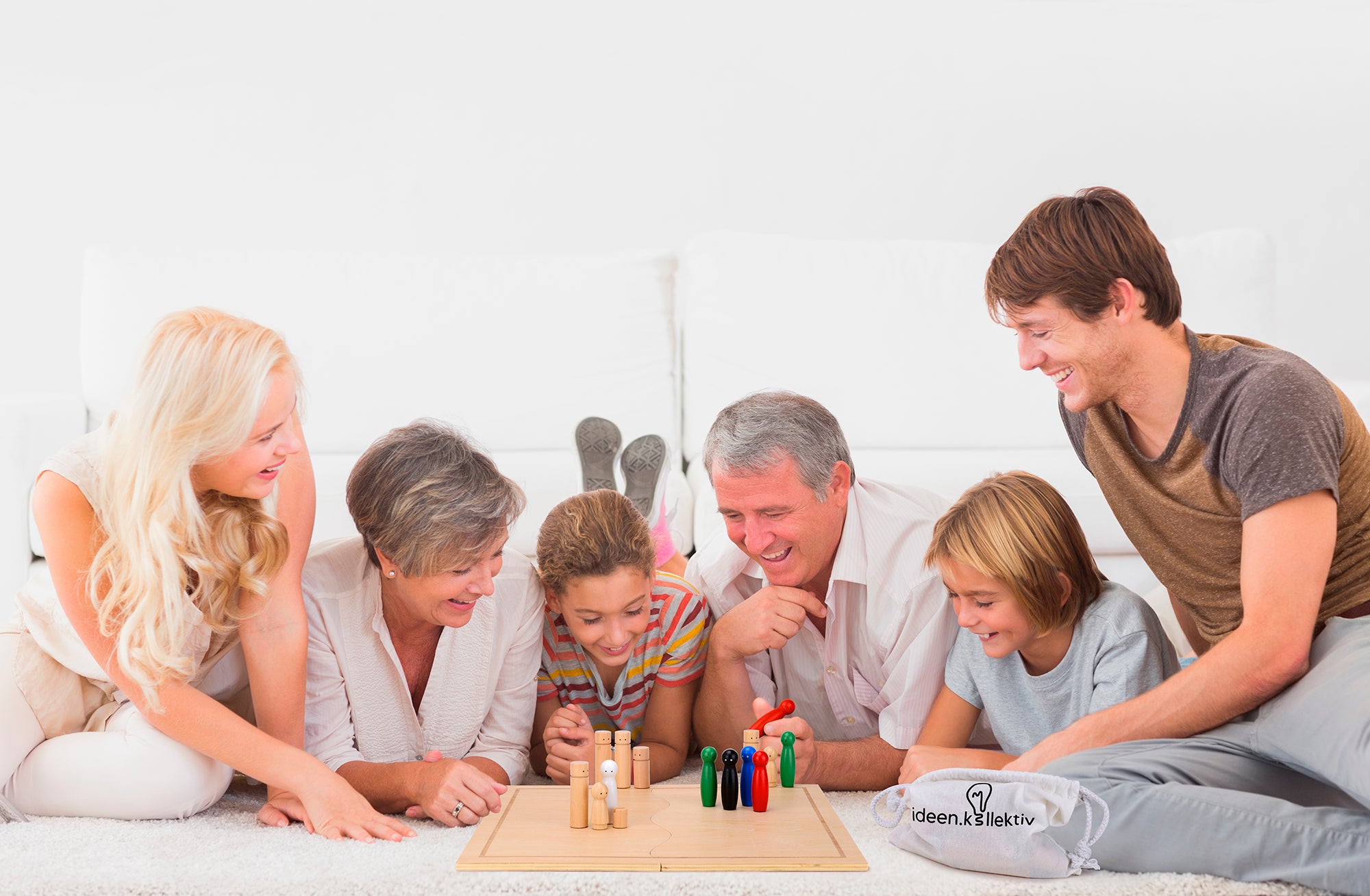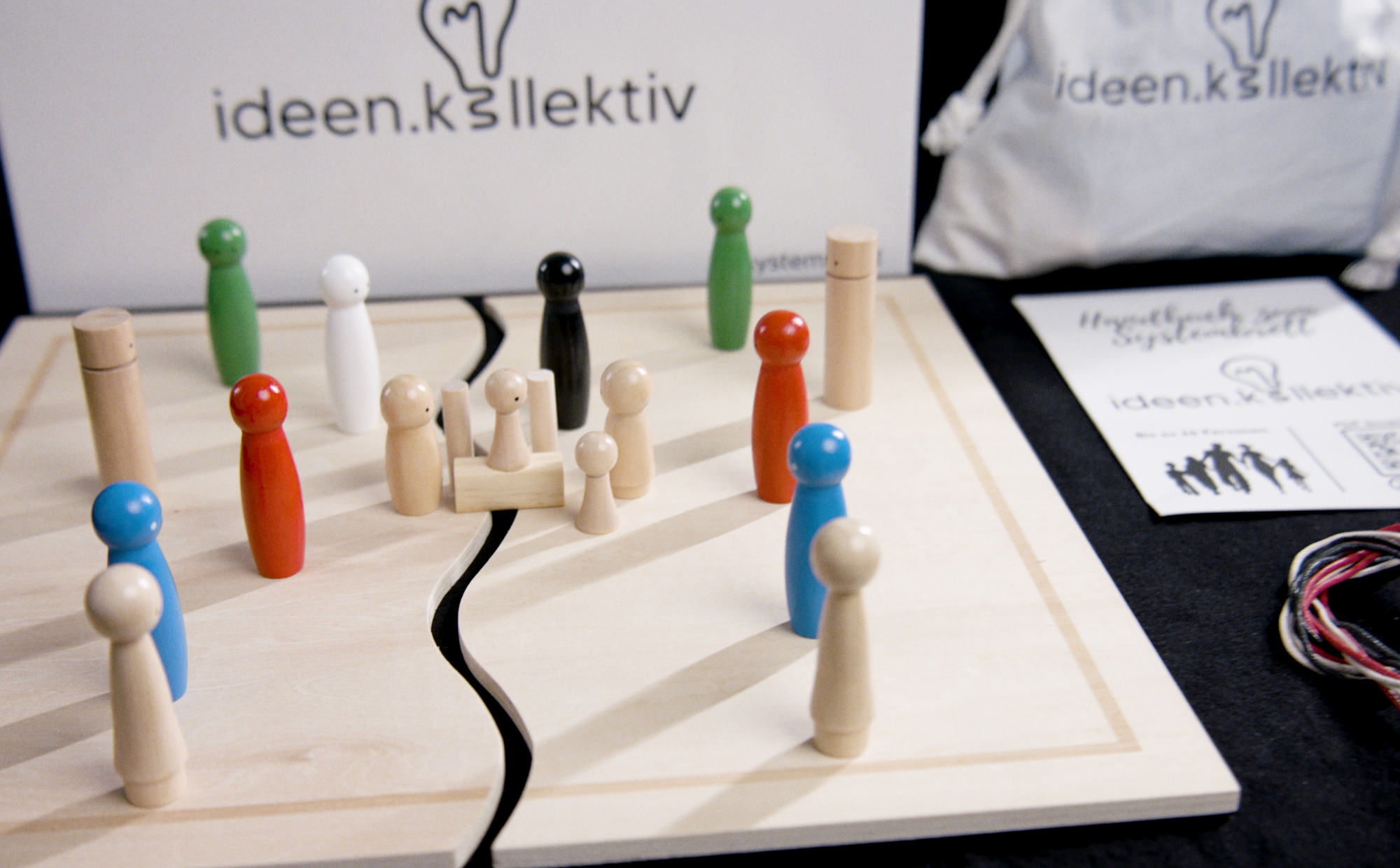What does working with the system board achieve?
The system board can reveal hidden conflicts, forces your clients to see things from the perspective of others, and reveals hierarchies within the system. Solutions are found by the client themselves through engagement with the board and targeted questioning from the coach.
In the different systems in which we all move, three factors always play an important role:
1. Binding
How close is the bond between two people? (e.g., mother to child, boss to employee, friends to each other, etc.)
2. Compensation
Balance is important. Give and take must be balanced, and you have to learn both.
3rd order
How is the hierarchy structured in the system and why? Does everyone feel like they're in the right place? (If a trained IT specialist is deployed as a window cleaner within the company, this is rarely the most sensible solution for the entire system.)
The system board can help you with:
- Conflicts in the family
- Conflict and stress in the company
- Optimization of hierarchies
- Achieving your own goals such as success, health, balance
- Detecting obstacles or hidden resources
- Understanding of other people
You should be careful with:
- Trauma patients
- cases of abuse
- Children especially!
With the system board, we delve deeply into conflicts and sometimes bring many repressed feelings to the surface. We approach the matter in a solution- and goal-oriented manner. This approach isn't right for every problem! You should consider beforehand whether working with this tool really makes sense.
What makes a good system board?
A good system board offers the widest possible selection of different, neutral game pieces and blocks. Different sizes and colors are helpful. Strings can also be used to support the work. A divisible board can clearly visualize the gaps between different parties. 
How does working with the system board work?
The initial consultation, of course, allows you to gain a rough idea of the problems and important people in your client's life. To gather as much relevant information as possible, you let your client speak freely and guide them in the desired direction by asking a few specific questions.
Once you've gained an overview, ask your client about their goal. What do they want to achieve?
Once the goal is formulated, offer to work on solving the problem if he or she wants to. 'Should we work on this together?'
In the next step, you ask your client to ask the system a question. This question should be as solution-oriented as possible and not phrased negatively. Questions like "How can I achieve xy?" or "How do I gain respect in my professional life?" are aimed at finding a solution, whereas "Why doesn't anyone like me?" is phrased very negatively and is not helpful.
Once the question has been clarified, ask your client to select appropriate figures for the relevant people. By choosing between different sizes and colors, initial hierarchies become clear during this step and provide you with starting points for questions. For example, you might ask why the client represents themselves with a smaller figure than their partner or boss. Don't jump the gun; just be interested and attentive. Your job is simply to get the other person thinking and to clear the path to a solution.
When making your initial selection, choose as few relevant figures as possible, placing them at the margin at the beginning. Remind yourself of the objective question formulated in the preliminary interview. If you notice that an additional person is missing during the interview, they can always be added. Be as minimalist as possible!
Once all the pieces have been chosen, ask your client to set up their system on the board. The distances and directions of the pieces from one another will reveal the connections and relationships between them. This provides a starting point for specific questions ("Why isn't person xy looking at you/ standing far away/...?"). Divisible boards can also be used during this phase to visualize deeper divisions in the system.
Give your client time to adjust everything until they are satisfied. Now ask the important question: "What do you notice?"
You'll be amazed at how far this small question can lead. The client now thinks about why their character is the smallest/largest, why certain characters are further away, and who their gaze is directed at. Your client may now have a completely new perspective on the system that surrounds them for the first time. It's not uncommon for the first solutions to problems to be identified during this phase. After their own view or their own feelings about the situation have been presented, have your client take on the view of the other members of the system. "How does XY feel about being stared at by everyone/standing further away, ...?" Pay attention to when characters are facing each other and looking at each other. This is often a time when there is a need to talk. Ask what your client has to say to the person or how they are feeling. You can then introduce a change of perspective and ask what the person your client is talking to would like or how they are feeling. During the coaching process, the pieces will move around the board until a satisfactory solution is found for your client and, if possible, also for their environment. For a family, for example, the ideal goal setup should be with both parents standing together, with the children in the middle in front of them. All the pieces are looking forward in the same direction. This gaze indicates that everyone in the family system is looking towards a shared future. Since our systems all function differently, there is naturally no one universal goal. The right goal is usually one that feels good for everyone involved. You can be creative together along the way. Swap pieces, add some, or change the direction of view. This way, you support your clients in putting the puzzle pieces together and playfully exploring different scenarios.
Not only people get their place on the system board, problems, hurdles and solutions are also visualized
To create a problem constellation using the system board, you proceed similarly to a regular system constellation. However, this involves a bit more creativity, as not only people, but also problems, solutions, and obstacles are assigned individual game pieces. It's a good idea to use square pieces instead of the regular ones, for example, to place square stones in the path as obstacles.
A typical basic setup for dealing with specific problems looks like this:
- Select the client's character
- Determine the target figure (also write the target on a piece of paper)
- Introduce a figure for an overlooked (unknown) resource
- An obstacle block (this does not necessarily have to be defined in more detail yet; the obstacle will be given a name over time, e.g. fear, inhibitions, excessive demands,...)
- A figure that represents the task at hand so that the goal can be achieved. (For example, having more trust in Xy, doing certain things regularly, etc.)
- One figure represents the secondary gain. This refers to the gain that stands in the way of achieving the goal. (e.g., wanting to be liked by everyone and always being there to receive affection, while ignoring one's own, deeper needs.)
With this setup you can now work creatively:
- “What if the obstacle wasn’t there?”
- “Who could help remove obstacles?”
- “What resources can be accessed?”
You don’t have a system board yet?
As you can see, the system board is a powerful tool for uncovering and addressing problems and grievances in your clients' relationships. In our shop, you'll find a particularly versatile family board that can even be divided to simulate rifts and offers a wide selection of figures in various sizes, shapes, and colors to illustrate the systems. We've also included colored strings that can help you represent bonds between individuals in the system or divide the board into different zones. Click here for the system board! 
For absolute beginners, we've produced a video course that provides step-by-step instructions for your first constellations. Click here for the basic course! 



